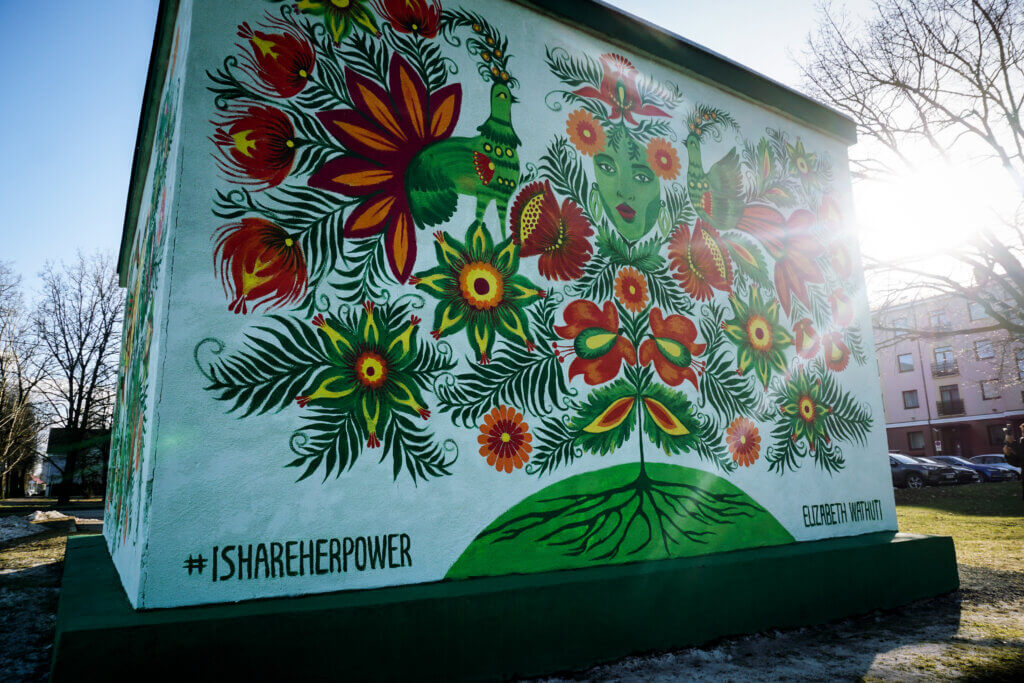21.04.25
New mural in Narva inspires bold solutions to the climate crisis
At the beginning of April, the cityscape of Narva gained a powerful new piece of street art that is both visually beautiful and carries a deep message on climate change and global justice. Why and how did this artwork appear at Madise 13b? Egle Küngas, head of Mondo’s environmental program, explains.
Street art is an inseparable part of modern culture, and Narva also has wonderful examples of it – some reference the COVID crisis, others celebrate diversity. The new piece adds the climate crisis to this collection.
The idea began years ago when Mondo launched the #IShareHerPower campaign and created first street art paintings on the topic in Tallinn. These works are inspired by the actions of female climate activists from around the world. Mondo has worked for the past 17 years in smaller communities in Kenya, Uganda, Ghana, Birma, and elsewhere. We’ve seen how environmental and climate changes are increasingly challenging for local people – especially when agriculture is the family’s only source of income, which is often the case in these communities. I hear more and more distressing stories from Mondo’s partner communities – about floods, long droughts, water scarcity, or poor environmental conditions.
Estonia has been supported in difficult times – now it’s our turn to support others. Caring for others can start at home – by reducing food waste, making thoughtful purchases, or choosing energy from renewable sources. It’s very symbolic that the completed mural in Narva is unveiled on the wall of an electrical substation – a place associated with the environment, climate, jobs, and livelihoods.
The finished mural is inspired by Elizabeth Wathuti, who was present at the opening. Through her compassion and action for the environment and climate, Elizabeth has gained international recognition and planted tens of thousands of trees in Kenya. Her story was interwoven into the mural by artist Viktoria Berezina, a Ukrainian war refugee living in Estonia, who combined it with motifs of the Ukrainian Tree of Life and Petrykivka folk art.
To me, the four sides of the mural in Narva symbolize different things. The cheetah on one wall represents the speed with which we must act to address environmental crises. The lion on another wall symbolizes strength, resilience, and courage in facing difficult challenges. I’m especially glad that the Swedish lion already present in Narva now has a friend – the Kenyan lion. On the third wall, there is a bird, which I associate with dreaming. Let us have the courage to dream that solutions are possible. On the fourth wall is Elizabeth – a living example that bold dreaming, combined with swift collective action, can lead to great deeds. If it’s possible in Kenya, why not also in Narva, in Ida-Virumaa, in Estonia, and across the world?
See more photos of the mural by Veronika Mozberg on Mondo’s Flickr.
